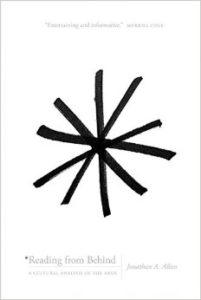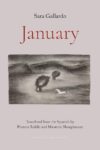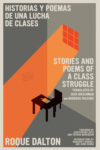 [University of Regina Press; 2016]
[University of Regina Press; 2016]
After reading the first draft of this review of Jonathan A. Allan’s Reading From Behind: A Cultural Analysis of the Anus, my editor wanted to make sure we gave Full Stop readers a clear sense of what Allan’s proposed approach to literary criticism — an anal-centric perspective as opposed to a phallocentric perspective — actually entailed. “I ass-ume he doesn’t just mean paying more attention to descriptions of assholes in literature,” my editor wrote, “but I don’t have a positive sense of how it is not that.”
Well, I’m afraid that Allan’s book — for all its grandiose descriptions of the possibilities inherent in reading from behind — also gives no positive sense that the act itself is anything other than focusing on descriptions of assholes in literature, and speculating from there what this butthole-shaped lens can teach us. Still, Allan’s premise is intriguing:
Since we all have an anus, it seems to me that this “private part” contains a utopian potential for a theory of sexuality, gender, sex, desire, and pleasure that is inherently inclusive. The anus is not exclusive, like the penis or the vagina, to one sex, to one type of body. Indeed, even aberrations of the penis and vagina, for instance in cases of intersexuality, are not inherently problematic to the logic of this study, which argues that we must read from behind.
What is problematic, though, for the logic of this study, is that Allan apparently operates within a universe in which the female of the human species has no butthole. It is not at all clear who this utopian inclusiveness is intended to include: every single one of the works of art that Allan chooses to analyze in order to demonstrate his approach centers exclusively around gay male sex. I was sure this couldn’t be the case throughout, and kept waiting for the moment when Allan would finally acknowledge that women also possess these democratic orifices. I reached his analysis of Latin American poet Delmira Augustini’s erotic poem “El Intruso,” with relief, thinking I was going to read about anal-centric pleasure from the perspective of a sexually uninhibited woman. Unfortunately, no: Allan’s analysis begins and ends with a reminder that the narrator’s gender is not specified, nor is their lover’s, and he encourages us to read this poem as an anal sex scene between two men. Women, in Reading From Behind, exist as oft-quoted scholars, but never as the sexual, multi-orificed and full-bodied humans that men are allowed to be. Insomuch as Allan is envisioning women in his audience, it seems to be as a potential threat. His essay on Gore Vidal’s Myra Breckinridge even contains an act of inoculation against feminist ire:
Before closing this chapter, I want to offer a brief commentary on rape culture and Vidal’s novel. In a rape culture such as ours, this scene is horrifying, but equally it seems to expose a number of hidden fantasies. The myth of the “rape fantasy” for women — that is, that women desire to be raped — has been rightly critiqued by a range of feminist theorists (and exposed as a myth), but there is something to be said, one imagines, for the rape of the rapist, the rape of the misogynist, the rape of the homophobe.
Allan never specifies what this something must be, implicitly expecting readers to agree with him. But if we’re talking about empowerment, inclusivity, and the decisive queering of every last oppressive norm, why does anyone have to get raped? He also employs the term ‘rape culture’ as fact rather than as a specific ideological tenet, and this paragraph is just one example of a problem that Reading From Behind exhibits throughout. Allan consistently references “our culture” without ever specifying who “our” is and which culture he is referring to. Meanwhile, he talks at length about how anal sex and the discussion of the anus “makes people extremely uncomfortable” without acknowledging that this discomfort is itself a product of a particular cultural milieu. Nowhere in South America, to use one broad example, would the anus’s appeal constitute a discomfiting, innovative, or exotic idea, but Allan never qualifies his claims that anal-phobia is a cultural default. He never examines the ways in which his own culturally bound assumptions inform this view.
His assertion, too, that there is no such thing as a rape fantasy connotes a glaring ignorance of female sexuality and its complexities. Though he quotes a letter from the sex column Savage Love in Reading From Behind’s introduction, he evidently remains unaware that scores of Dan Savage’s female readers write to the sex columnist about their own or their partner’s rape fantasies: sometimes without a clear root explanation, but often as a reclamation of control over a traumatic event.
Reading From Behind has, overall, a puzzling relationship to trauma: Allan writes with some awareness of the concept, but when he gets truly excited about the subversive potential of an idea, he seems suddenly oblivious that that not all readers will share his giddiness, and he offers no persuasive argument to balance out his glee. In his effervescent analysis of the film Doña Herlinda y su hijo, he writes excitedly of breaking the “incest taboo,” particularly that of mother and son, offering that:
What is arguably discomforting to critics and viewers of the film, I would argue, is this effeminate boy who has undoubtedly fallen in love with his mother. Although I am reluctant to suggest that critics are effeminophobic, I do contend that there is a general reluctance to accept the effeminate boy/man.
That there is an inherent relationship between effeminate males and mother/son incest is itself an effeminophobic claim. Most of us are, I would argue, far more disturbed by the concept of a man falling in love with his mother than by a man exhibiting effeminate characteristics. Allan writes as though the “incest taboo” is somehow liberating to break, showing no understanding that sex with one’s mother is, outside of the theoretical realm, traumatic. He includes more than one disclaimer that he does not condone ‘rape culture,’ but never tempers his discussion of breaking the ‘incest taboo’ with comparable concern for how these claims come across. Paradoxically, then, Reading From Behind is at once overly concerned with audience interpretation and not concerned enough, which then reads less like concern than presumptuousness.
The chapter titled “Spanking Colonialism” is Reading From Behind’s strongest essay, but it still makes no clearer what reading from behind actually means. Allan analyzes the work of Kent Monkman, a Cree artist from Toronto who dissects Canadian cultural norms by queering the idyllic panoramic wilderness so prominent in Canadian art: among the mountains, rivers, and wild deer, golden in Kinkadian lighting, he includes such scenes as a Native American spanking a Canadian mounty, who might, this is ambiguous, be enjoying it. Allan unambiguously enjoys writing about it, offering readers this extra-scholarly spate of prose, emphasis mine:
This painting encourages us to think about the mechanics of spanking, the aesthetics of that experience, the long pleasures and pains, the quick taps, the slow repetitions involved in achieving the pinkest of asses. A pensive interpretation of this image ought to reflect the slowness of spanking, matched by the stillness of the waters, which the Mountie gazes upon as he is slowly and methodically spanked.
If this is reading from behind, then what is it besides meditating on the role of an ass (and/or its hole) in a work of art? Encouraged by the thought-provoking paintings, however, I attempted to apply the method of reading from behind to Marian Engel’s novel Bear, a work that parallels Monkman’s. She also dissects her audience’s relationship to the Canadian wilderness and to Canadian national identity by presenting a subversive sexual situation (a woman having sex with a bear) that challenges the reader to reconcile familiar tropes with (presumably) visceral discomfort. Can we read Bear from behind? Certainly the novel leaves no position unexplored, but in applying Allan’s form of analysis to this book that seemed primed for it, I found that emphasizing the anus adds nothing to the literary experience or understanding of Bear. What then, does it bring to the works that Allan chooses to analyze? Where is this approach taking us, and what, by adopting it, are we actually leaving behind?
Reading From Behind ironically reifies the centrality of the phallus by suggesting that everything exists in relationship to it. Though Allan writes that “sex need not be read as phallically dependent,” the book itself is so aggressively dependent on the phallus as to deny that anyone without one even exists. This unqualified erasure of women comes across as even more offensive than outright misogyny: to hate someone, you must first acknowledge that they are real. Disconcerting, too, that Allan writes:
One of the aims of Reading from Behind is to consider how we might go about displacing — though not replacing or destroying — the primacy of the phallus in literary and cultural criticism. Although van Driel notes that the penis has been “abused by feminists,” a claim that many men’s rights activists would surely agree with, I believe that it is necessary to return to feminist theory, at least briefly, because it has provided some of the most exciting and innovative — though also problematic — critiques of the phallus.
I agree that feminist theory runs the gamut between exciting and problematic ideas, but I’m immediately wary of a cultural critic who will casually reference men’s rights activists, a group notorious for perpetuating threats and harassment toward women online, as though their opinions warrant consideration. Most queer theorists of the 21st century, and their interested readers, don’t require their feminist theory allusions to be brief. Who is Allan’s intended audience, then, and what don’t they have that his book is providing? I feel less clear on these questions after reading the book than I did when I only knew it by its title.
Said juicy title, along with its eye-catching cover and playfully elegant fonts, suggest that Reading From Behind: A Cultural Analysis of the Anus will be startlingly current, a jolt through the academic establishment. Instead, this book feels stubbornly steeped in what the norms of queer theory might have been decades ago, focused on gay male empowerment at the unapologetic exclusion of women.
Allan also skeptically cites a widely accepted conception that teenage males of today are far less homophobic than they were decades ago. “If it is true that young people ‘increasingly do not care’ [whether one of their peers is gay],” he asks, “then why do we need to continue having discussions about how ‘it gets better,’ as Dan Savage would have us tell queer youth?” Here, Allan ignores an obvious and deep-seated cultural factor: religious parents. He writes, too, without acknowledging that, among youth, relationship to orientation has transformed drastically even within the last five years. More high-school, college, and even middle-school students are identifying as transgender and genderqueer than ever before. Their omission from this book makes Reading From Behind feel better suited to the 90’s, although, from what I remember, women had buttholes then, too.
Sarah Neilson is a freelance editor in Boston. She writes a column for Full Stop on America’s emotional condition.
This post may contain affiliate links.







